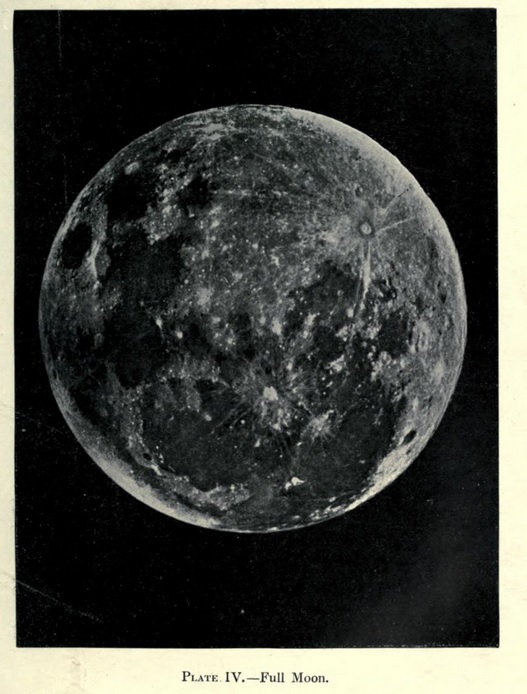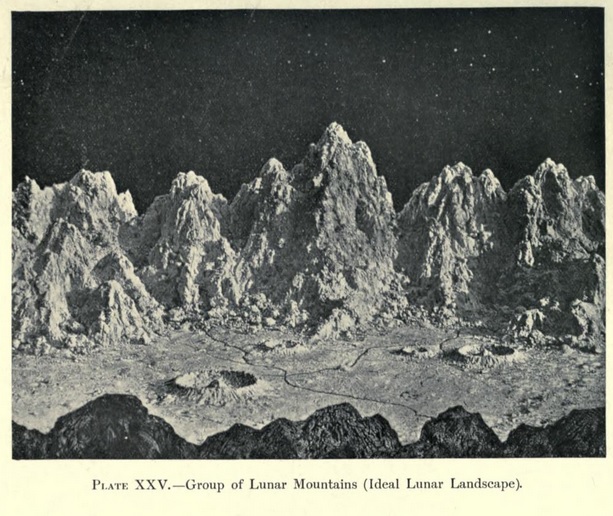

He was joking, of course, but an astonishing number of people actually believe in this so-called "Capricorn One" scenario. The reason, undoubtedly, is the sheer excellence of the special effects used in science-fiction movies, far surpassing much of the inartistic and amateurish footage shot by the real-world astronauts. Advocates of the hoax theory almost always point to Stanley Kubrich's 2001, appearing just a year before Apollo XI; if he could make that, even the government could probably churn out the kind of spectacle NASA gave the world in July!
Kubrich was among the first artists to create convincingly realistic images of outer space for the big screen, but he had many predecessors in the world of still photography, even in the Nineteenth Century. Perhaps the most extraordinary was a Scotsman, the retired engineer James Nasmyth, whose meticulous re-creations of the lunar surface (using plaster models still preserved in the Science Museum of London) give the uncanny impression of having been shot on location by some Jules Verne hero.
The Moon by Nasmyth & Carpenter [1874] is one of the true classics of astronomy, its astonishing plates and lucid prose fascinating experts and public alike. Although it contained some new ideas about lunar geology, it functioned mainly as a readable textbook presenting the dominant paradigm of the age. Paradigms last while people believe them, and it is easy to see why readers of The Moon would be firmly convinced. Indeed, while reading it, I found myself starting to accept its central dogma: surely the lunar craters are volocanoes?
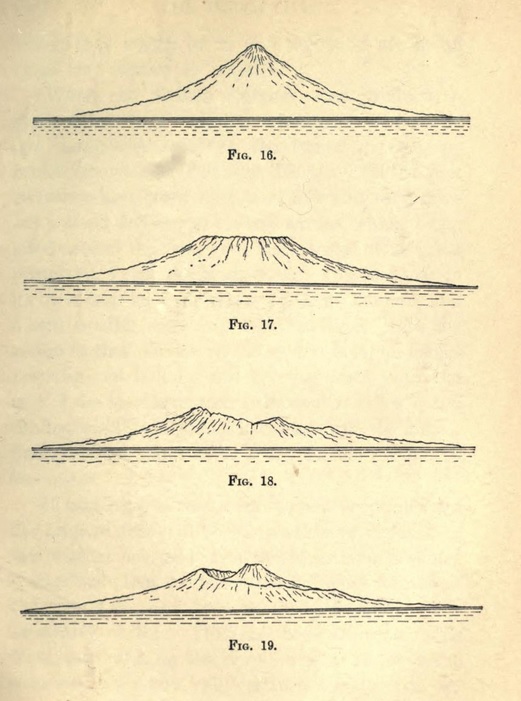
Nasmyth knew volcanoes well -- he had seen Vesuvius in action -- and had no doubt that the cratered landscape he saw through the telescope was volcanic. Indeed, the photographs he made of plaster models of earthly volcanoes, starkly monochrome landscapes devoid of vegetation or any sign of life, seem even more alien than his "selenographic" images.
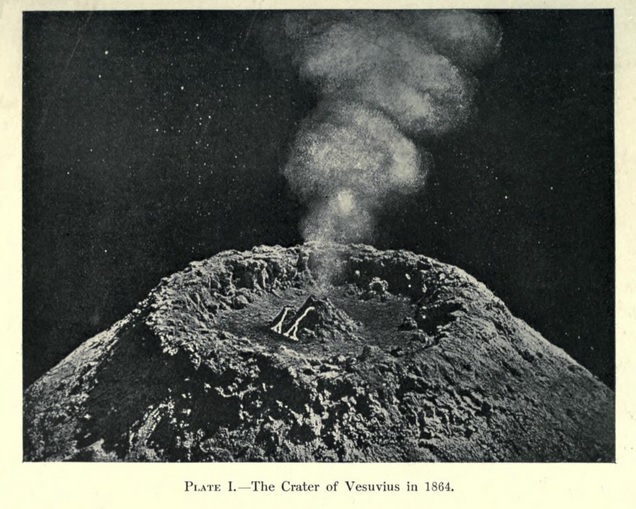
In the very decade that a few radicals daringly proposed Earth and Moon were once the targets of a cosmic bombardment, Nasmyth placed his knowledge and art entirely at the service of the reigning volcanic school. In doing so, he helped prolong the length of its reign by generations. Even when Armstrong, Aldrin, and Collins made their epic voyage nearly a century later, most planetary scientists, raised on the books of Nasmyth and his successors, still dismissed out of hand the idea that bolide impacts had shaped the topography of the Moon. Then the Eagle landed, and soon everything changed.
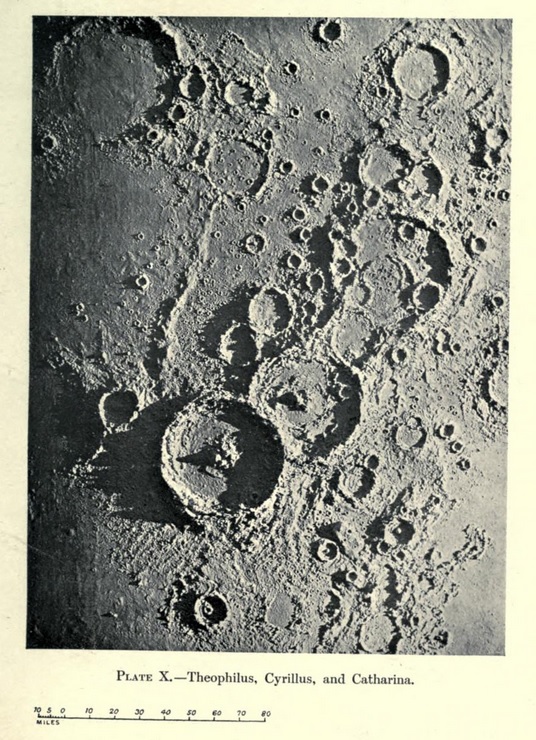
The "concluding summary" from The Moon Considered as a Planet, a World, and a Satellite by James Nasmyth, CE, and James Carpenter, FRAS, Late of the Royal Observatory, Greenwich, with Illustrative Plates of Lunar Objects, Phenomena, Numerous Diagrams, Etc. [London: Bradbury, Agnew & Co., 1874] The online version is the 1903 reprint by John Murray. The authors' words are in bold.
Our main object being to attempt what we conceive to be a rational explanation of the surface details of the moon which should be in accordance with the generally received theory of planetary formation, and with the peculiar physical conditions of the lunar globe the opening of our work was a summary of the nebular hypothesis as it was started by the first Herschel and systemised by Laplace. Following these philosophers we endeavoured to show how a chaotic mass of primordial matter existing in space would, under the action of gravitation, become transformed into a system of planetary bodies circulating about a common centre of gravity ; and further, how, in some cases, the circulating planetary masses would themselves become sub-centres of satellitic systems ; our earth being one of these sub-centres with only one satellitic attendant, to wit, the moon, the subject of our study.
The moon being thus considered as evolved from the parent nebulous mass, and existing as an isolated and compact body, we had next to consider what was the effect of the continued action of the gravitating force. By the light of the beautiful "mechanical theory of heat" we argued that this force, not being destructible, but being convertible, was turned into heat ; and that whatever may have been the original condition of the parent nebulous mass, as regards temperature, its planetary offspring became elevated to an intense degree of heat as they assumed the form of spheres under the influence of gravitation.
The incandescent sphere having attained its maximum degree of heat by the total conversion thereinto of the gravitating force it embodied, we explained how there must have ensued a dispersion of that heat by radiation into surrounding space, resulting in the cooling and consequent solidification of the outermost stratum of the lunar sphere, and subsequently in the continuation of the cooling process downwards or inwards to the centre. And here we essayed to prove that in this second stage of the cooling process, when the crust was solid and the subjacent portion of the molten sphere was about to solidify, there would come into operation a principle which appears to govern the behaviour of certain fusible substances, and which may be concisely termed the principle of pre-solidifying expansion.
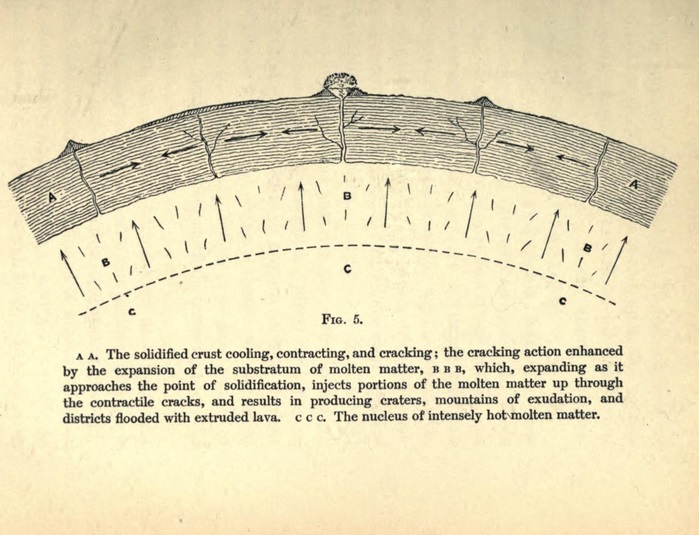
We adduced several examples of the manifestation of this principle, soliciting for it the careful consideration of physicists and geologists, and looking to it as furnishing the key to the mystery of volcanic action upon the moon, since, without needing recourse to aqueous or gaseous sources of eruptive power, it afforded a rationale of the ejection of the fluid and semi-fluid matter of the moon through the solidified crust thereof, and also of the dislocations of that crust, unattended by actual ejection of sub-surface matter, of which our satellite presents a variety of examples, and which the earth also appears to have experienced at some period of its formative history.
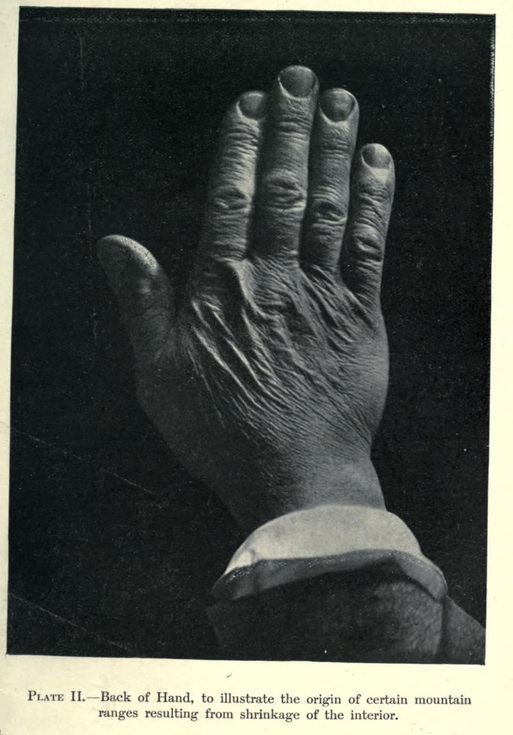
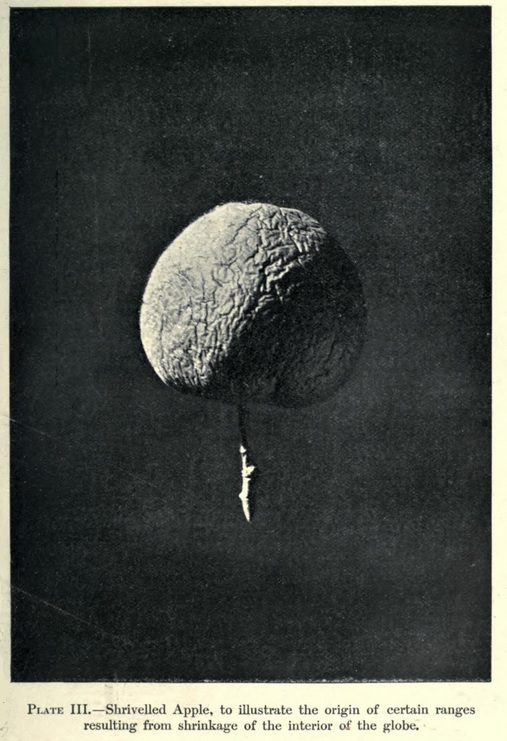
Arrived at this stage of our subject we thought it needful to introduce some pages of data and descriptive detail. Accordingly in one chapter we discussed the form, magnitude, weight, and density of the moon, and the force of gravity at its surface : and the more soundly to fix these data in the mind, we devoted a few lines to explanation of the methods whereby each has been ascertained. We then examined the question (so important to our subject) of the existence or non-existence of a lunar atmosphere, giving the evidence, which may be regarded as conclusive, in proof of the absence of both air and water from the moon, and, therefore, refuting the claim of these elements to be considered as sources or influencers of the moon's volcanic manifestations.
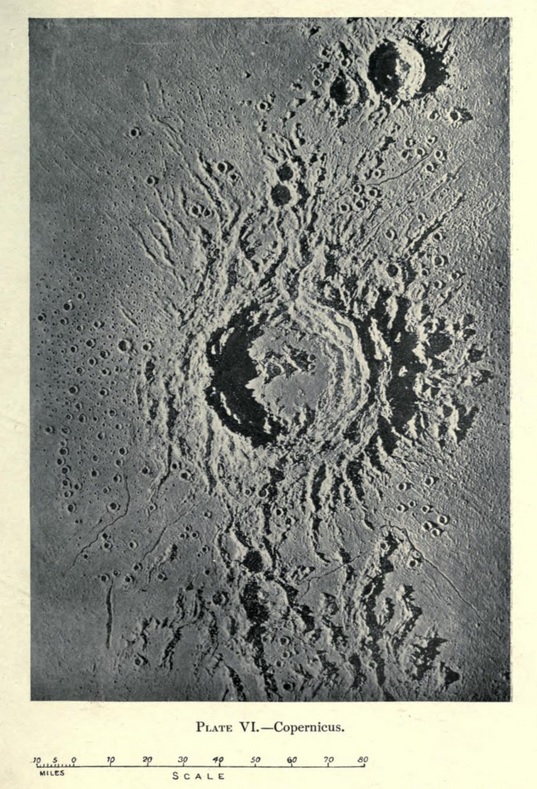
A general coup d'œil of the lunar hemisphere facing the earth next engaged our attention, and we considered the aspect of the disc as it is viewed by the naked eye and with telescopes of various powers. From this general survey we passed to the topography of the moon, tracing briefly the admirable labours of those who have advanced this subject, and, by aid of picture and skeleton maps, placing it within the reader's power to become more than sufficiently acquainted for the purposes of this work with the names and positions of detailed objects and features of interest. Special descriptions of interesting and typical spots and regions were given in some few cases where such appeared to be called for.
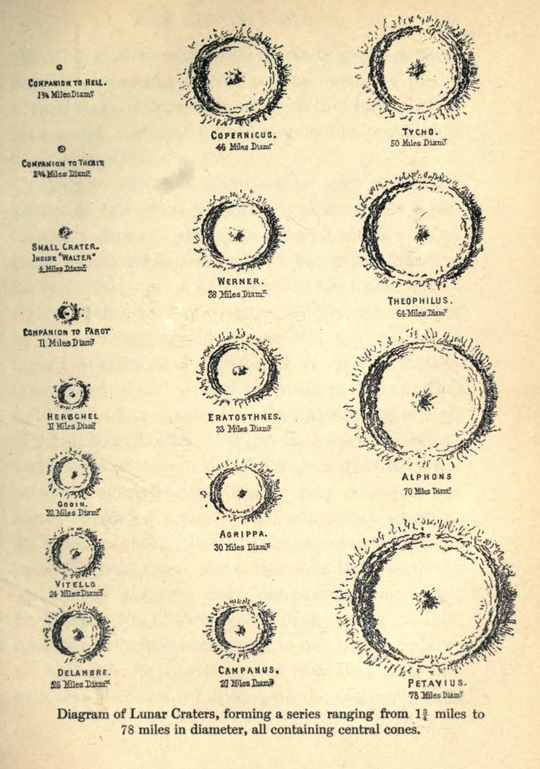
These descriptive matters disposed of, we proceeded to discuss the various classes of surface features with a view to explaining the precise actions which appear to us to have led to their formation. Naturally the craters first demanded our attention.
We pointed out the reasons for regarding the great majority of the circular formations of the moon as craters, as truly volcanic as those of which we have examples, modified by obvious causes, upon the earth ; and, tracing the causative phenomena of terrestrial volcanoes, we showed how the explanations which have been offered to account for them scarcely apply to those of the moon : and thus, driven to other hypotheses, we endeavoured to demonstrate the probability of the lunar craters having been produced by eruptive force, generated by that pre-solidifying expansion of successive portions of the moon's molten interior, which we enunciated in our third chapter.
The precise cause of phenomena which resulted in the production of a crater of the normal lunar type, with or without the significant central cone, were then illustrated by a series of step-by-step diagrams with accompanying descriptive paragraphs.
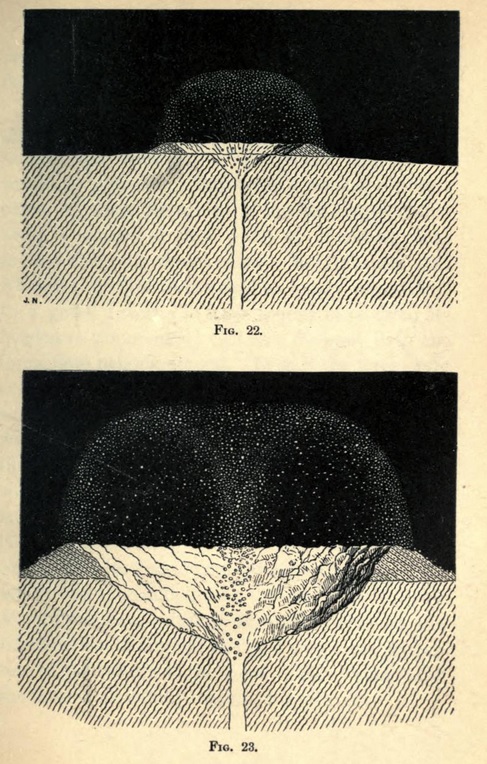
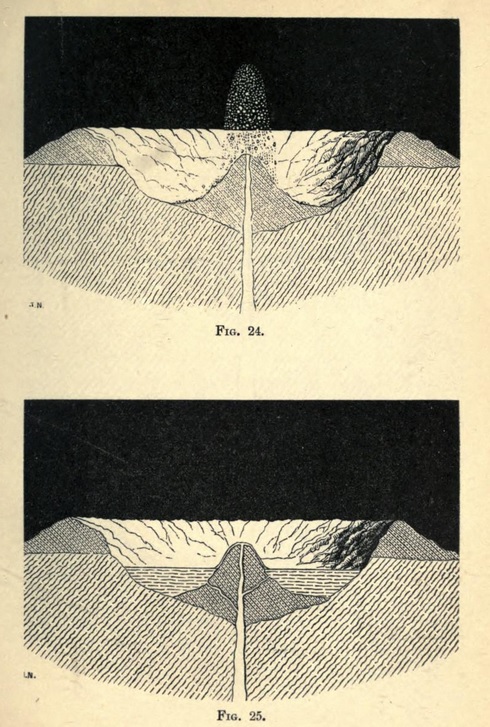
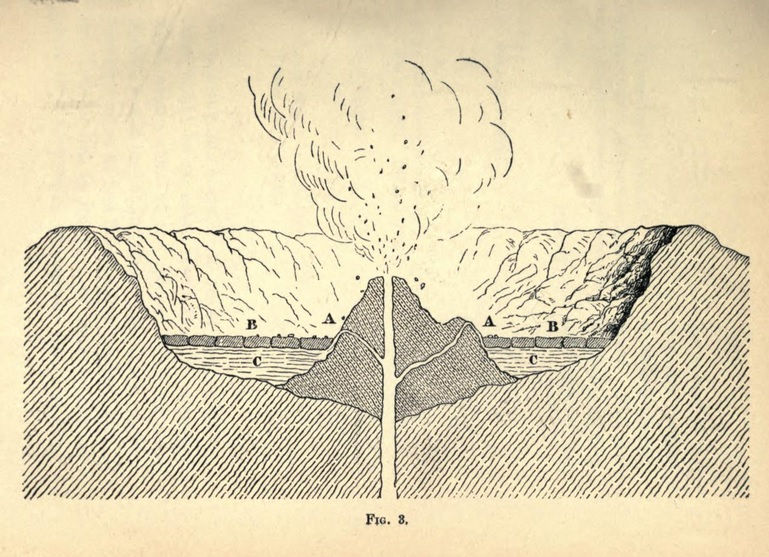
And after treating of craters of the normal type we pointed out and explained some variations thereupon that are here and there to be met with, and likewise those curious complications of arrangement which exhibit craters superimposed one upon another and intermingled in strange confusion.
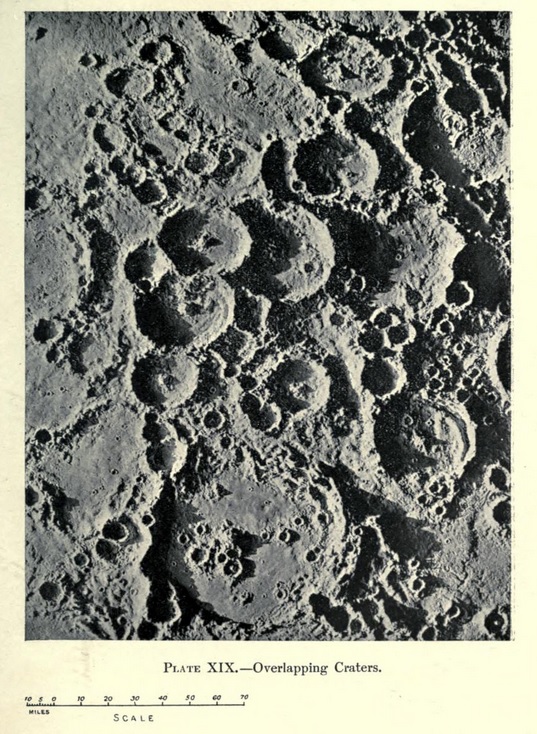
From craters manifestly volcanic we passed to the consideration of those circular formations which, from their vastness of size, scarcely admit of satisfactory explanation by a volcanic hypothesis. We summarised several proffered theories of their origin, and pointed out what we considered might be a possible key to the solution of the selenological enigma which they constitute, without, however, expressing ourselves entirely satisfied with the validity of our suggestion.
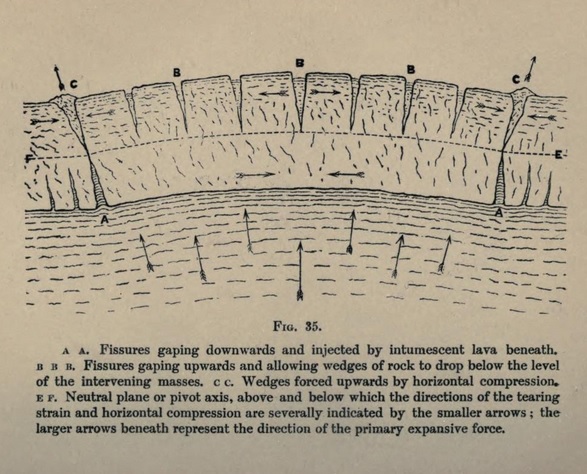
The less mysterious features presented by peaks and mountain ranges were then discussed to the extent that we considered requisite, viewing their comparatively simple character and the secondary position they occupy in point of numerical importance upon the moon.
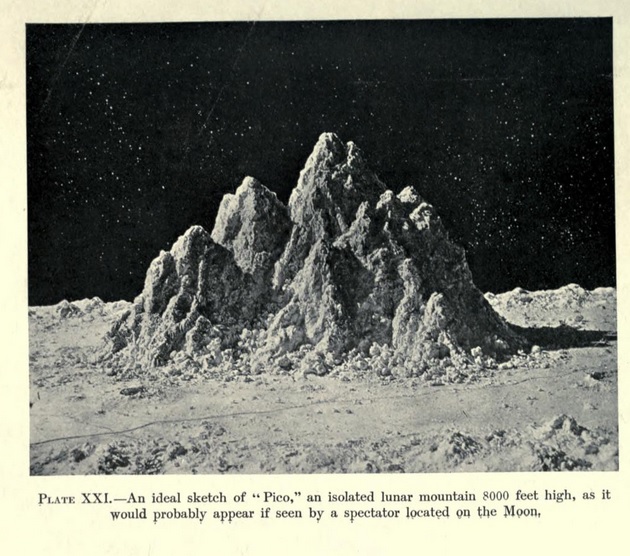
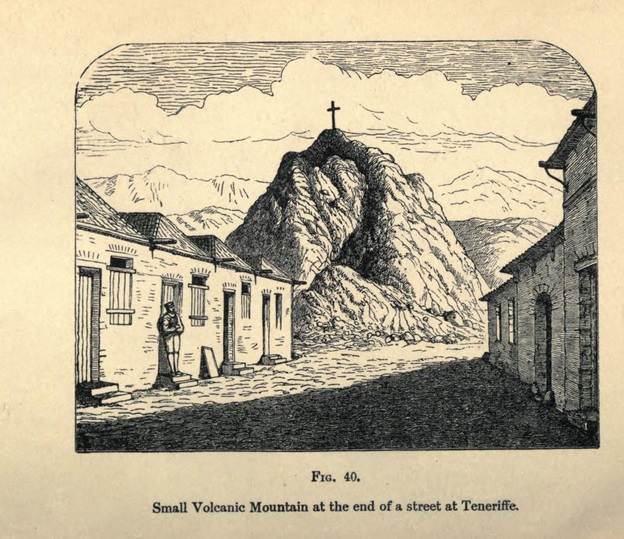
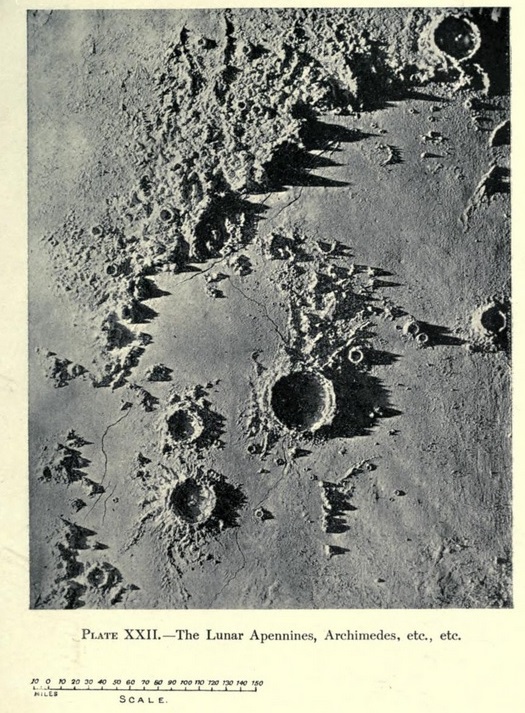
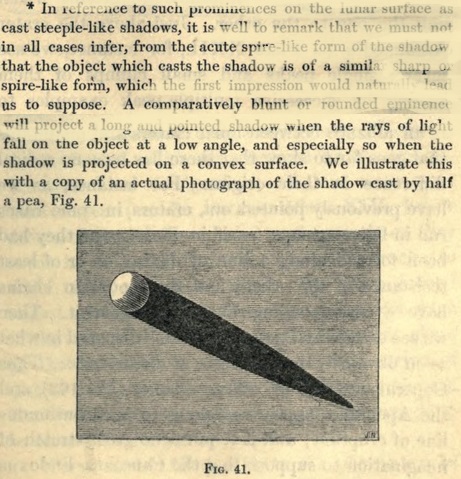
At greater length we dealt with the cracks and chasms and the allied phenomena of radiating streaks, pointing out with regard to these latter the strikingly beautiful correspondence in effect (and therefore presumably in cause) between them and crack-systems of a glass globe "starred" by an expanding internal medium.
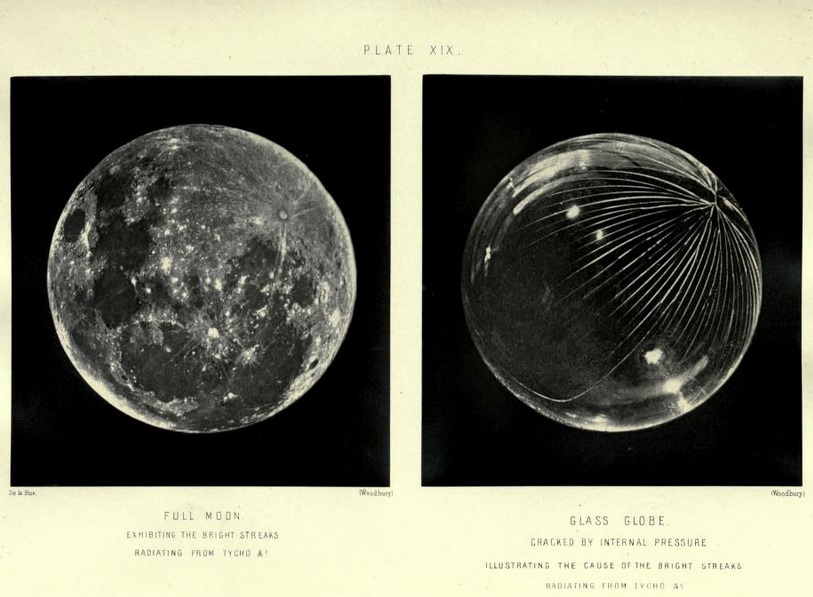
The more notable objects and features of the lunar surface being disposed of, we had next to say a few words upon some residual phenomena, chiefly upon the colour of lunar surface details, and upon their various degrees of brightness or reflective power. And, inasmuch as varying brightness seemed to us to be related to varying antiquity, we were thence led to the question of the chronology of selenological formations, and to the disputation upon the continuance of volcanic action upon the moon in recent years. We regarded this question from the observational and the inferential points of view, and were led to the conclusion that the moon's surface arrived at its terminal condition ages ago, and that it is next to hopeless to look for evidence of existing change.
Thus far our work dealt with the moon as a
planetary body merely. It occurred to us, however,
that we might add to the interest attaching to our
satellite were we to regard it for a time as a
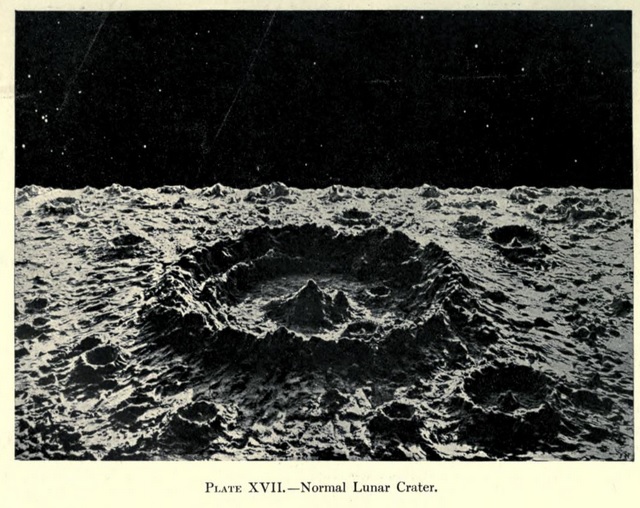
We therefore attempted a description of an imaginary sojourn upon the moon, and pointed out some of the more striking aspects and phenomena which we know by legitimate inference would be there manifested. We trust, that while our modest efforts in the chapter referring to this branch of our subject may prove in some degree entertaining, they may be in a greater degree instructive, inasmuch as certain facts are brought into prominence which would not unnaturally be overlooked in contemplating the moon from the earth, the only real standpoint that is available to us.
In our final chapter we considered the moon as a satellite, and sought to enhance popular regard for it on account of certain high functions which it performs for man's benefit on this earth ; but which are in great risk of being overlooked. We showed that, notwithstanding the moon's occasionally useful service as a nocturnal luminary, it fills a far higher office as a sanitary agent by cleansing the shores of our seas and rivers through the agency of the tides.
We pointed out the vast amount of absolutely mechanical work and commercial labour which the same tidal agency executes in transporting merchandise up and down our rivers --- an amount that, to take the port of London alone, represents a money value per annum that may be reckoned in millions sterling, seeing that if our river was tideless all transport would have to be done by manual or steam power. We then hinted at the stupendous reservoir of power that the tidal waters constitute, a form of power which has not as yet been sufficiently called into operation, but which may be invoked by-and-by, when we have begun to feel more acutely the consequences of our present prodigal use of the fuel that was stored up for us by bountiful nature ages upon ages ago.
[Nasmyth's awareness of the impending "energy crisis" was by no means unique. Popular legends about the recent origin of the conservation movement notwithstanding, many writers of the Long Nineteenth Century worried about the overconsumption of non-renewable resources. Readers of this blog may recall the still-youngish Albert Einstein's thoughts on the matter.]
The moon's services to the navigator, in affording him a ready means of finding his longitude at sea; to the chronologist and historian, as a timekeeper, counting periods too vast for accurate reckoning by other means; to the astronomer and student of nature, in revealing certain wonderful surroundings of the solar globe, which, but for the phenomena of eclipses caused by the moon's interposition, would never have been suspected to exist --- these were other functions that we dwelt upon, all too briefly for their deserts; and, lastly, we spoke of the moon as a medal of creation fraught with instructive suggestions, which it has been our endeavour to bring to notice in the course of this work.
And from uses we passed to abuses, directing attention to a few popular errors and wide-spread illusions relating to lunar influence upon, and in connection with, things terrestrial. This part of our work might have been considerably expanded, for, in truth, the moon has been a misunderstood and misjudged body. Some justice we trust we have done to her : we have brought her face to the fireside; we have analysed her features, and told of virtues that few of her admiring beholders conceived her to possess. We have traced out her history, fraught with wonderful interest, and doubtless typical of the history of other spheres that in countless numbers pervade the universe : and now, having done our best to make all these points familiar, we commend the moon to still further study and still more intimate acquaintance, confident that she will repay all attentions, be they addressed to her as ---
